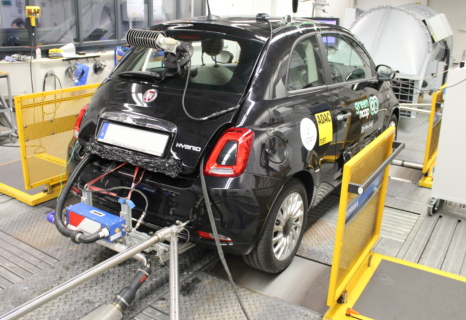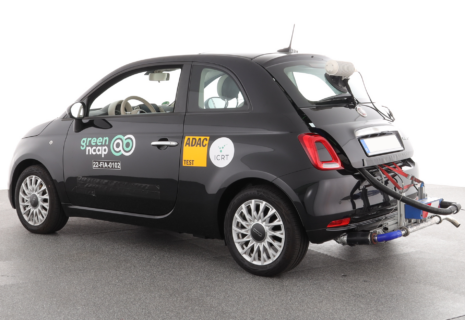FIAT 500 Hybrid 1.0 GSE petrol FWD manual
2022
53%
4.5
10
Clean Air Index
6.3
10
Energy Efficiency Index
5.2
10
Greenhouse Gas Index
| Laboratory Tests | NMHC | NOX | NH3 | CO | PN | |
|---|---|---|---|---|---|---|
| 5.010 | Cold Test | |||||
| 5.510 | Warm Test | |||||
| 0.010 | Highway | |||||
| 3.910 | Cold Ambient Test | |||||
| Road Test | ||||||
| 5.710 | On-Road Drive | |||||
| 2.45 | On-Road Short Trip | |||||
| 3.98 | On-Road Heavy Load | |||||
| 3.25 | On-Road Light Load | |||||
| 2.02 | Congestion | |||||
| Laboratory Tests | Energy | |||
|---|---|---|---|---|
| 6.810 | Cold Test | |||
| 6.910 | Warm Test | |||
| 5.710 | Highway | |||
| 5.810 | Cold Ambient Test | |||
| Consumption | Driving Range | |||
| Average | 5.2l100 km | 680km | ||
| Worst-Case | 6.2l100 km | 565km | ||
| Greenhouse Gases | CO2 | N2O | CH4 | |
|---|---|---|---|---|
| 5.810 | Cold Test | |||
| 6.010 | Warm Test | |||
| 4.510 | Highway | |||
| 4.710 | Cold Ambient Test |
Specifications
- Tested Car ZFA3120000JE6XXXX
- Publication Date 10 2022
- Vehicle Class City and Supermini
- Emissions Class Euro 6d AP
- Tyres 185/55 R15
- Mass 1,029 kg
- Engine Size 999 cc
- Power/Torque 51 kW/92 Nm
- Declared CO2 120 g/km
- Declared Battery Capacity 0.13 kWh
- Declared Consumption 5.3 l/100 km




































































































































Our verdict
August 2023: The result of this car been updated. Previously reported Ammonia (NH3) values were incorrect owing to a technical error with the equipment at the test laboratory and a correction has been applied.
The tested FIAT 500 is a compact car with a naturally aspirated 3-cylinder petrol engine. It uses quite a small hybrid battery with only 11 Ah capacity (at 12 V). The overall system manages to keep the consumption at around 5.2 l/100 km, close to the officially reported value. The vehicle could make use of more robust and efficient exhaust aftertreatment, especially for ammonia (NH3) and CO in high power demand phases, as well as for particle number. Here, a gasoline particle filter would help boost up the result. The total score of 5.2 represents an average performance and leaves potential for improvement. Overall, the vehicle is awarded 3 Green stars.